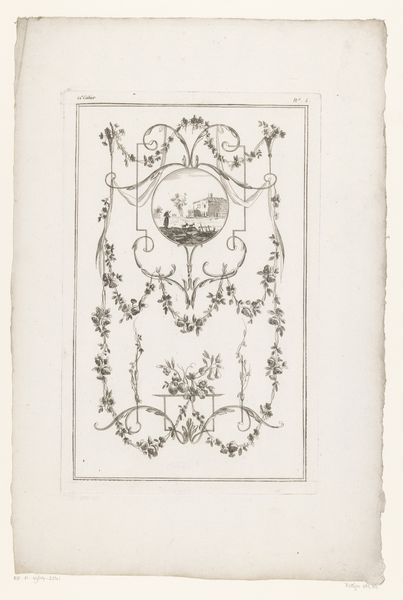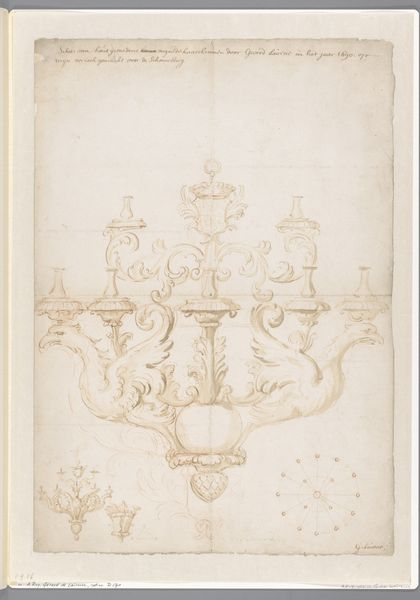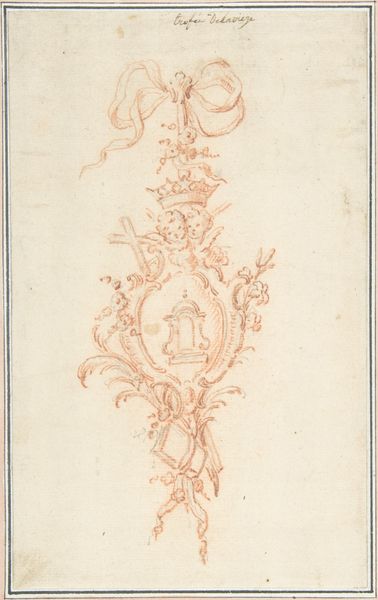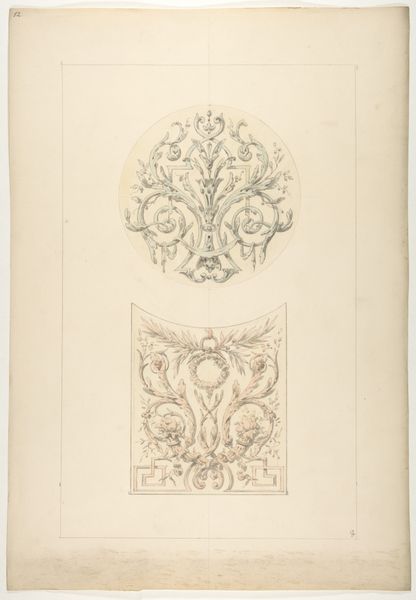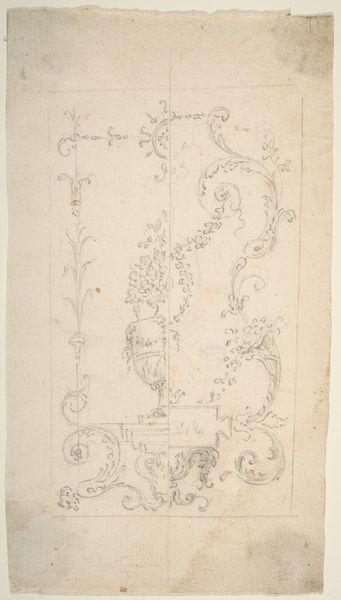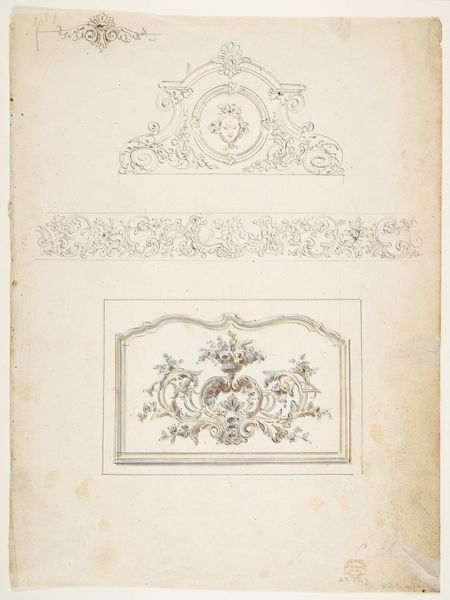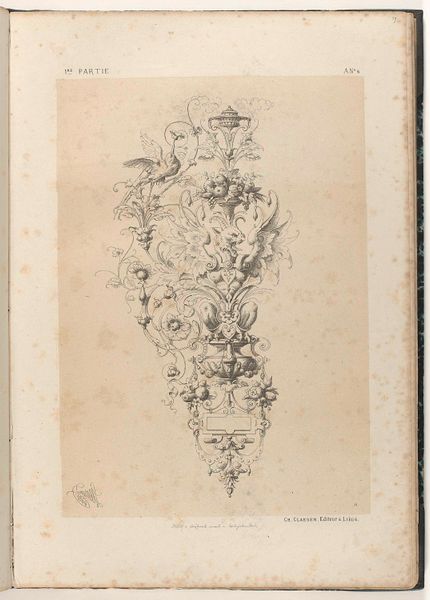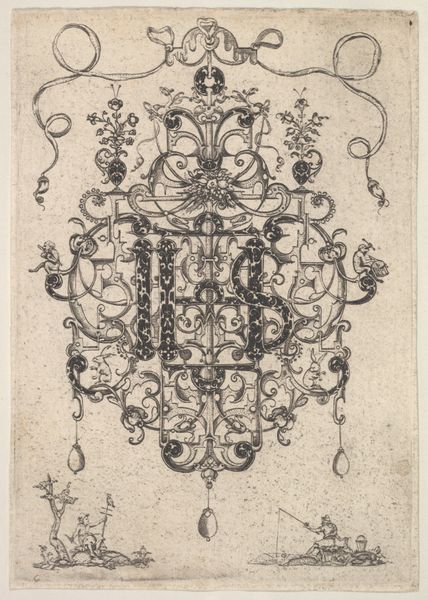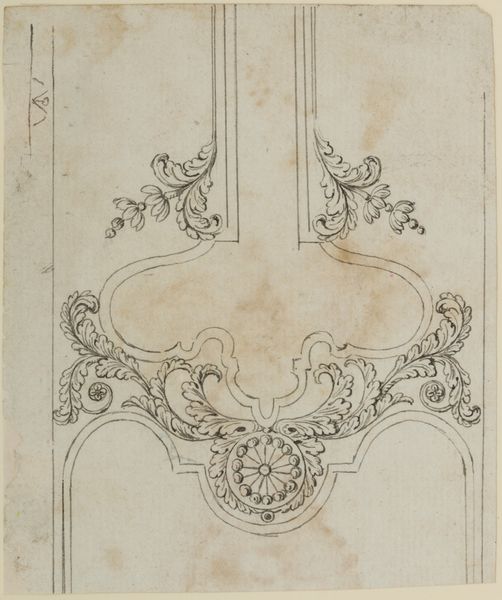
Dimensions: 19 x 11 in. (48.3 x 27.9 cm)
Copyright: Public Domain
Editor: This is a “Design for a Wall Panel,” created sometime between 1765 and 1820, likely by Henri Salembier. It combines drawing, printmaking, and watercolor. It looks like a blueprint, and is so delicate in color and composition. How should we interpret this piece? Curator: This panel design interests me particularly because of the labor implied. Consider the material conditions necessary to produce it. Someone had to prepare the paper, mix the watercolors, etch the initial print… these are all skilled crafts, not simply artistic gestures. Editor: So you are saying that the "artistic gestures" is only one element when discussing art pieces, while labor practices and production should be given more considerations? Curator: Exactly. And who was this intended for? Wall panels like this signal a certain level of wealth and investment in the aesthetics of domestic space. Rococo, with its flourishes and intricate details, catered to a very specific market, and a powerful system of consumption. The artist is secondary to these facts, serving this specific purpose for decoration for aristocratic residences. What do you make of the drawing as a kind of proto-mass production technology? Editor: That's interesting; it suggests a different way to see the design, focusing on its potential for replication, as a template more than a unique artwork. I never considered its social and financial dimensions quite so explicitly! Curator: Yes. We have been conditioned to appreciate works by famous and recognizable artists but we can go deeper and acknowledge all those that participated to produce this very image! The implications surrounding materiality, processes and distribution have much more to offer to analyze artworks such as this!
Comments
No comments
Be the first to comment and join the conversation on the ultimate creative platform.



